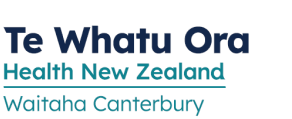What does it do?
Levodopa, carbidopa and entacapone is used to treat Parkinson’s disease. Levodopa changes into dopamine in your body. Dopamine helps your brain control your body movements. Carbidopa and entacapone help to get more levodopa into your brain.
Before you start
- Tell your doctor if you have heart or mental health problems, or if you have angle-closure glaucoma.
- Tell your health professional if you are pregnant, planning to become pregnant, or breastfeeding.
How should you take it?
Take levodopa, carbidopa and entacapone regularly as directed with a glass of water. You can take it with or without food.
Do not stop taking levodopa, carbidopa and entacapone suddenly without talking to your doctor first.
What if you forget a dose?
If it is nearly time for your next dose, skip the missed dose and take your next dose at the usual time. Otherwise, take the missed dose as soon as you remember. Do not take two doses at the same time.
Can you take other medicines?
Some medicines available without a prescription may react with levodopa, carbidopa and entacapone including:
- iron supplements (e.g. Ferro-Tab®)
Tell your pharmacist or doctor about all medicines or treatments that you may be taking, including vitamins, herbal products (e.g. kava) or recreational drugs.
What side effects might you notice?
| Side Effects | Recommended action |
|---|---|
|
Symptoms of a fast or irregular heartbeat including: fluttering, pounding or pain in your chest, dizziness or fainting |
Tell your doctor immediately |
|
Squirming or wriggling movement (such as head wobble) Hallucinations, mood changes Unusual urges (e.g. gambling, eating, spending, sex) Falling asleep without warning Persistent diarrhoea, abdominal pain |
Tell your doctor |
|
Drowsiness Diarrhoea, dry mouth or throat |
Tell your doctor if troublesome |
|
Lightheaded or dizzy after standing up |
Stand up slowly. If it continues, or is severe, tell your doctor |
|
Change in urine colour (red/brown) |
This is harmless |
|
Nausea, vomiting |
Can happen when you first start but should improve. Try taking with a snack such as a cracker or a biscuit. Tell your doctor if doesn't improve. |
If you notice any other effects, discuss them with your doctor or pharmacist.
Other information:
- Levodopa, carbidopa and entacapone can impair your ability to do tasks such as driving or using machines. Alcohol makes this worse. Discuss your risk with your health professional. See Are you safe to drive?
- Eating a lot of protein may affect how well levodopa, carbidopa and entacapone works for you. Talk to your health professional about the best way for you to take levodopa, carbidopa and entacapone in relation to food.
This leaflet contains important, but not all, information about this medicine.
Prepared by the MyMedicines Committee at Christchurch Hospital, Te Whatu Ora - Waitaha, New Zealand. September 2025
For more general information about this sheet and its contents, see: What does a My Medicines sheet cover?
Te Reo Māori
Te Reo Māori information sheets supported by Health Quality and Safety Commission New Zealand
Web links for this sheet in different formats
Click on buttons to copy web addresses for this leaflet:
If your browser does not automatically copy these links use its copy command instead.
About My Medicines
My Medicines Patient Information Leaflets (PILs) contain important, but not all, information about the medicines they describe.
For more information about the sheets, see: What does a My Medicines sheet cover?
My Medicines is developed by a team at Te Whatu Ora – Waitaha. Our team is made up of doctors, pharmacists, and a non-medical person to help us keep to plain language. We also discuss our information with specialist health professionals or groups when needed

